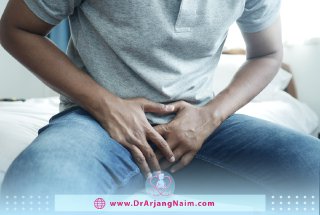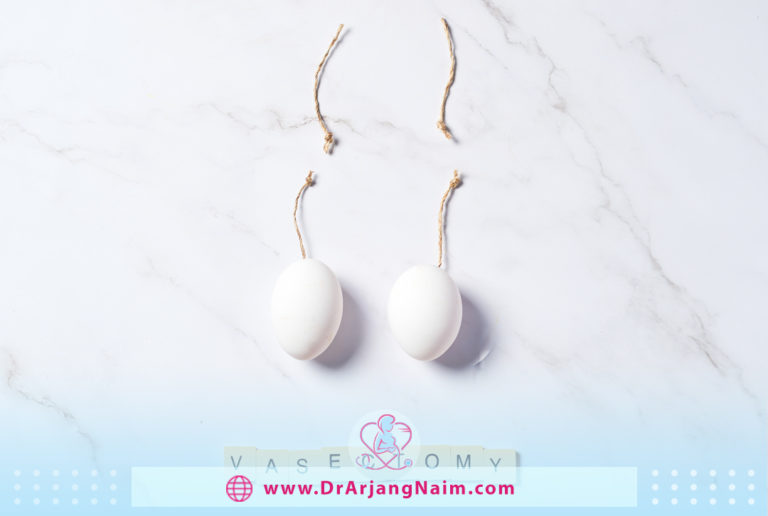A vasectomy is a form of male contraception that cuts off the entry of sperm into the semen. This is done by cutting and sealing the sperm-carrying tubes. It has few risks and can usually be performed in an outpatient setting under local anesthesia.
Before having a vasectomy, you should ensure you do not want to have children in the future. Although reversible, it should be considered a permanent form of male contraception. Vasectomy offers no protection against sexually transmitted infections.
Different Types
There are three different types of vasectomy:
- Conventional vasectomy
- No-scalpel vasectomy
- Minimally invasive vasectomy
Conventional
Conventional vasectomy uses a scalpel to make an incision in the scrotum. One incision in the middle of the scrotum or two incisions (one on each side) can be used. Incisions are usually 1.5-3.0 cm long, and no specially designed vasectomy instruments are used.
Because the incisions are larger, they often need to be closed with stitches. The rate of complications is higher with conventional vasectomy methods.
No-scalpel
No-scalpel vasectomy (NSV) is a minimally invasive vasectomy that uses specially designed instruments to create smaller-sized holes in the skin of the scrotum.
The NSV incision is usually less than 10 mm, and skin sutures are not required to close these smaller incisions. Two special tools (vascular ring clamp and vessel separator) are necessary for NSV. Technically, a scalpel-free vasectomy refers to how a hole is made in the skin of the scrotum.
The doctor can make 1 or 2 skin incisions and perform various procedures to close or remove parts of the vas deferens, and it is considered a scalpel-free vasectomy.
Minimally invasive
Minimally invasive vasectomy uses the same instruments as scalpel-free vasectomy. It is the least invasive method: no skin incision, no scalpel, and no part of the vas deferens are removed.

Is a vasectomy 100% effective?
The only way to prevent pregnancy is to avoid sex. However, the failure rate of vasectomy is very low. In rare cases after a vasectomy (about 1 in 10,000 cases), sperm may pass through the severed end of the vas deferens. Vasectomy has been a safe and successful method of birth control for many years.
Semen samples are routinely checked after a vasectomy to confirm a successful procedure. If the semen samples still contain sperm, you may have another vasectomy. But this happens about once in 10,000 cases, a much lower failure rate than any other form of birth control.
What happens before a vasectomy?
Certain things must happen before a vasectomy can be performed.

Counseling
Before having a vasectomy, you should seriously discuss surgery with your healthcare provider. You must be sure that you do not want to have any more children. It would help if you considered vasectomy as a permanent form of birth control. Although there is a way to reverse a vasectomy, it is not always successful. Your healthcare provider will also talk to you about the following:
- History of excessive bleeding or blood disorders.
- Allergy or sensitivity to local anesthetics.
- A skin disease involving the scrotum.
- Regular use of aspirin or medications containing aspirin or medications that affect bleeding.
- History of previous injury or surgery in the genital area, scrotum, or groin.
- History of recent or frequent infections of the urinary or genital tract.
Consent form
You will be asked to sign a consent form stating that you understand the vasectomy and its risks. Before signing this form, ensure you understand everything and are confident in your decision. It is an elective procedure. Don’t proceed until you’re sure it’s your choice.
Shaving and washing
Shave your entire scrotum the night before or the morning of your vasectomy. To reduce the risk of infection, wash your scrotum and groin thoroughly the day before and the morning after the procedure.
Vasectomy procedure
This is performed in a doctor’s office or an outpatient surgery center. Local anesthesia is used to numb the scrotum. Anesthesia is administered by injection. The end of the vas deferens is divided and prevents the passage of sperm. This prevents the sperm from mixing with the semen and being released when the man ejaculates during orgasm. The surgeon makes a hole in the skin and takes the vas deferens. Then the vas deferens is divided and tied, cut, or burned. There is little discomfort with a vasectomy.
What happens after you have a vasectomy?
Conditions that occur after surgery include:
- Pain/bruising: You will likely have mild discomfort, bruising, and swelling after the procedure. For discomfort, you can take acetaminophen every four hours. You can place ice packs on your scrotal support and dressing. Frequent use of an ice pack for the first 36 hours will help reduce swelling. Always wrap the ice pack in a towel or place something between it and your skin.
- Dressing: Change the dressing when it becomes stained or dirty. You can buy small sterile gauze. You can remove the dressing when it is dry or spot-free, usually within a day. A small amount of oozing may be present. It is better to drain the liquid than to collect it inside.
- Bathing: You can shower from the day after the vasectomy. Avoid swimming for a few weeks. To dry the scrotum, dry it with a towel and do not rub it.
- Skin separation: Sometimes, the skin may separate due to tissue fluid, blood discharge, or body fluids. If this happens, use sterile gauze and your fingers to pinch the edges together. This brings the skin closer together and allows it to heal.
It is common to have some of these symptoms after a vasectomy. They should disappear within 72 hours of surgery. Call your doctor if you have the following symptoms:
- An unusual amount of pain
- Extreme swelling of your scrotum
- Continued bleeding
- A fever (over 100 degrees Fahrenheit or 37.7 degrees Celsius)

What are the risks of a vasectomy?
Complications such as inflammation, bleeding, or infection may occur but are uncommon and not serious. Minor risks include:
- Pain: Any procedure can affect the nerves, and rarely there may be residual pain. The testicles are sensitive organs, so pain can occur in people with testicles, whether they’ve had a vasectomy or not.
Post-vasectomy pain syndrome is complex and occurs in 1% to 2% of post-vasectomy patients. Researchers don’t know exactly why these different symptoms occur, but some people may experience testicular pain, pain with ejaculation, and psychological distress.
- Sperm granuloma: A hard and sometimes painful lump the size of a pea may form due to sperm leaking from the cut vas deferens. This lump is not dangerous and is almost always absorbed by the body. Scrotal support and mild pain relievers can help relieve symptoms.
- Congestion: You may feel pressure from the sperm in the testicles, epididymis, and lower urethra. This discomfort may occur two to 12 weeks after vasectomy. As with granulomas, congestion usually resolves over time.
Unfounded concerns
Many men worry that a vasectomy can cause serious problems, but these fears are unfounded. For example, a vasectomy cannot:
- Affect sexual performance: Vasectomy does not affect libido or masculinity in any way. Men have even reported higher sexual satisfaction after vasectomy.
- Permanent damage to the sexual organs: There is little risk that the testicles, penis, or other parts of the reproductive system will be damaged during surgery. In very rare cases, damage to the blood supply can lead to the loss of the testicle, but if the surgeon is skilled, this is unlikely to happen.
- It increases the risk of some cancers: Although there have been concerns in the past about a possible link between vasectomy and testicular or prostate cancer, there is currently no proven link.
- Increases the risk of heart disease: Like the cancer scare, there doesn’t seem to be a link between vasectomy and heart problems.
- Causes severe pain: Minor pain and pulling may be felt during surgery, but severe pain is rare. Likewise, there may be some pain after surgery, but for most men, the pain is minor and goes away after a few days.
Benefits of a vasectomy
Vasectomy has many advantages as a method of preventing pregnancy. The main advantage is effectiveness. Vasectomy is more than 99.99% effective in preventing pregnancy. Like tubal ligation in women, this method is a one-time method and provides permanent contraception. Compared to tubal ligation, vasectomy:
- Is simpler
- Is more effective
- It can be performed on an outpatient basis
- Has fewer complications
- It is much less expensive
When is it safe to have sex after a vasectomy?
You can have sex seven days after a vasectomy, but you must use another method of birth control until a sperm count shows that the semen is sperm-free. Typically, semen analysis is completed about two to three months after a vasectomy.
What is a vasectomy reversal?
Vasectomy reversal (vasovasostomy) is a surgical procedure that reverses the results of a vasectomy.
In a reverse vasectomy, the healthcare provider removes scar tissue from both ends of the vasectomy. Then the two ends of the tube are aligned and sewn together. This is sometimes impossible, and the healthcare provider sutures the vas deferens to another structure called the epididymis.
Depending on how many years have passed since the vasectomy, the success rate for sperm return in ejaculation is between 60 and 95 percent. Pregnancy is possible in more than 50% of cases after returning. However, success rates begin to decline 15 years after a vasectomy.
Other factors play a role in the chances of pregnancy, even if a vasectomy is performed successfully. The age of the spouse or partner is important as well as the health of the sperm.
The bottom line
If you are sure you do not want to have children or another child, you may decide to have a vasectomy. Discuss this decision with your significant other and healthcare provider if you are in a serious relationship. Some vasectomies can be reversed, but don’t do it unless you’re sure it’s what you want.
Remember that a vasectomy is an effective method of birth control, but it does not protect you or your partner from sexually transmitted infections. For this reason, you should use other forms of protection, such as condoms, even after a vasectomy if you are at risk for an STI.
This method does not provide immediate protection against pregnancy. Use an alternative method of birth control until your doctor confirms that there is no sperm in the semen. Before having unprotected sex, you must wait several months or more and ejaculate 15 to 20 times or more to clear the sperm from the semen.
Additional questions
- How long does a vasectomy take?
This surgery is performed under local anesthesia while the man awakens and takes about 15 minutes.
- Does a vasectomy affect size?
Men who have vasectomies still ejaculate the same amount. The only difference is that there are no sperm in the semen. The size, shape, and appearance of the penis, testicles, and scrotum are unchanged.
- Can sperm live beyond five days?
Sperm can live up to five days in a woman’s body. That’s why even if a woman has intercourse five days before ovulation, she has a chance to get pregnant because the sperm can survive all that time and fertilize the egg.
- What can destroy sperm?
- Smoking tobacco
- Drinking alcohol
- Using certain illicit drugs
- Being overweight
- Being severely depressed or stressed
- Having certain past or present infections
- Being exposed to toxins
- Overheating the testicles
- Having experienced trauma to the testicles
- Having certain medical conditions, including tumors and chronic illnesses
- Undergoing cancer treatments, such as radiation
- Taking certain medications
- Having a prior vasectomy or major abdominal or pelvic surgery
- Having a history of undescended testicles
- What are the recovery tips after vasectomy?
- Get some rest
- Kick your feet up
- Ice your area
- Practice good hygiene
- Wear comfortable clothing
- Take acetaminophen or ibuprofen
References
https://www.bestvasectomy.com/different-types-of-vasectomy-explained/
https://www.mayoclinic.org/tests-procedures/vasectomy/about/pac-20384580
https://www.webmd.com/sex/birth-control/vasectomy-overview
https://my.clevelandclinic.org/health/treatments/4423-vasectomy
https://my.clevelandclinic.org/health/treatments/15459-vasectomy-reversal
https://www.healthdirect.gov.au/vasectomy




